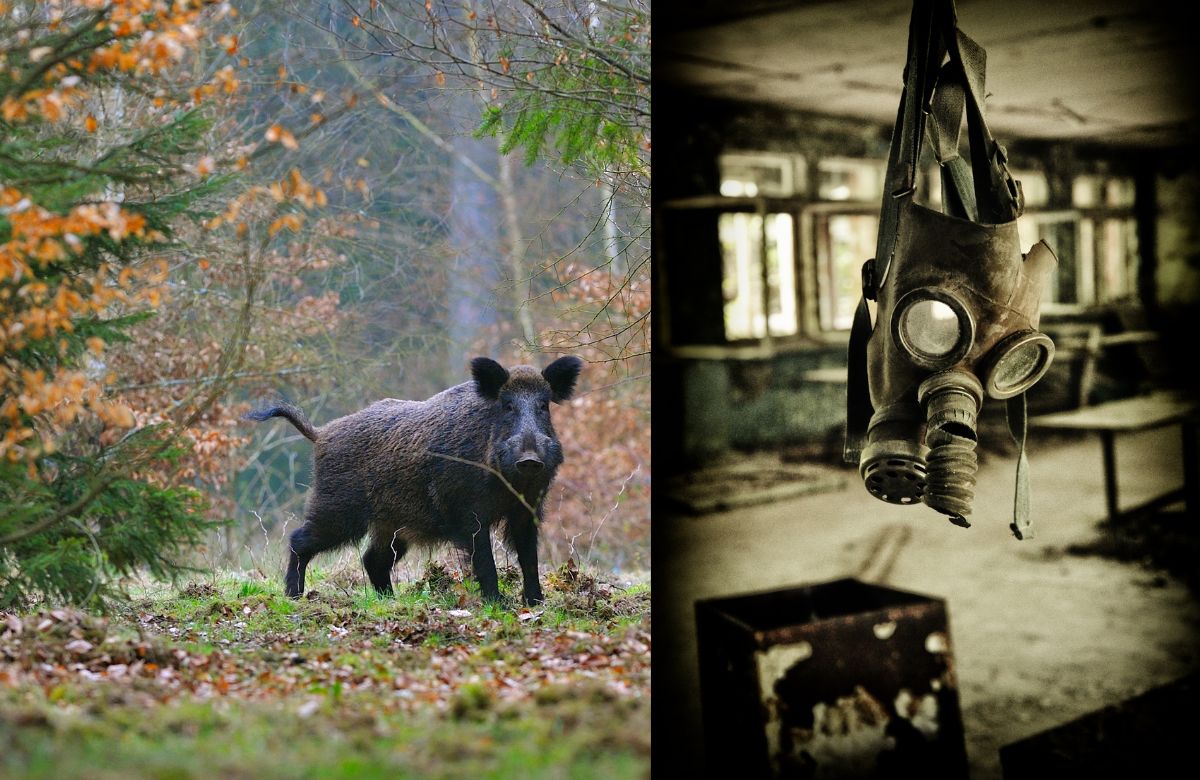Radiation exposure has various harmful effects on animals. Insects, small mammals, birds, and larger wildlife were all affected. Short-term effects include cellular damage, DNA mutations, and radiation sickness. However, the release of a massive amount of radioactive materials into the atmosphere had severe and long-lasting impacts on animals. Well, looks like the Chernobyl nuclear disaster chapters are opening again!
Wild Boars Turning Radioactive
In Germany, wild boars have long been a concern because they rip up graves, ravage fields, and attack humans. Scientists are baffled by something they refer to as the “wild board paradox,” though. According to a recent study, the Cold War’s nuclear weapons tests were a significant factor in the region’s wild boar population having high levels of radiation.
Even though their levels of radioactivity should have dropped over time, the boars are nonetheless more radioactive than other animals in the region. For a long time, scientists thought the 1986 Chernobyl disaster had poisoned the deer truffles the victims had been eating. A recent study that was published in the journal Environmental Science & Technology suggests that the truffles may have also been polluted by radioactive fallout from nuclear weapons tests that took place decades ago.
According to an article by Business Insider India, Cesium-137, a fission byproduct that is radioactive, was examined in pig flesh by the researchers. Cesium-137’s half-life, or the amount of time it takes for radioactive substance to decay by half, is 30 years. However, in some areas, the cesium-137 levels in the boars remained roughly constant.
Researchers discovered contamination in pig meat associated with atmospheric weapons from the 1950s and 1960s. According to one of the study’s authors, the cause may be due to Chernobyl and weapon isotopes interacting.
Also Read: Dismissing The Fear Behind Eating Seafood From Radioactive Areas, Japan’s PM Eats Fish On Camera
Chernobyl Disaster Impact On Animals
In the immediate aftermath of the disaster, numerous animals perished due to the acute effects of radiation exposure. However, the long-term impact was even more significant. Many animals experienced reduced fertility, developmental abnormalities, and increased rates of cancer due to their exposure to radioactive isotopes.
For instance, populations of wolves, boars, and deer increased in the years following the disaster. Birds, another group of animals in the Chernobyl Exclusion Zone, displayed varying levels of sensitivity to radiation exposure. Studies revealed that some bird species had smaller brains and exhibited reduced cognitive functions.
Cover image credits: canva

